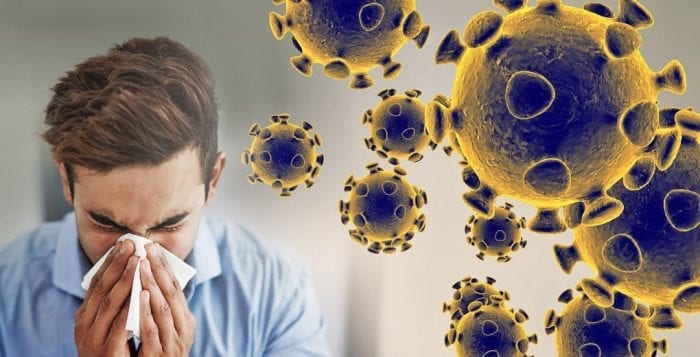In a Q&A with TBR News Media, Carol Gomes, interim chief executive officer at Stony Brook University Hospital, discusses a variety of topics including patient safety, quality control and curbing infections. Here is what she had to say.
1. Being the interim chief executive officer at the hospital, how important is patient safety and quality control to the day-to-day operations?
Stony Brook Medicine physicians and staff are committed to providing high-quality, safe patient care.

Quality and patient safety is priority number one, and we focus on safe patient care every day. The Stony Brook Medicine team convenes a safety huddle that is part of the day-to-day operations in every area, which includes critical leaders from all over the hospital.
We start the day with approximately 35 care team members from nursing leadership, physician leadership and operational leadership who report on important safety or quality opportunities. Our huddles are highly structured meetings that allow the hospital to focus on process changes with direct follow-up. This drives accountability to help ensure that adequate safety measures are in place for our patients at all times.
2. Interim SBU President Michael Bernstein mentioned to us that you were making an effort to curb infections at the hospital among other things. Could you discuss some of the initiatives you’ve been implementing to improve in that area?
Stony Brook University Hospital has three primary strategic quality priorities — clinical outcomes, patient safety and the patient experience.
Proactively, Stony Brook works to provide safe and effective care to every patient via our patient safety work groups. These groups analyze processes, review relevant data and implement process changes to enhance patient safety and prevent patient harm.
The vast majority of projects and improvement efforts are aimed at reducing hospital associated infections. There are teams that implement best practices for CLABSI, or central line associated bloodstream infections; hand hygiene; CAUTI, or catheter-associated urinary tract infections; C. diff, or Clostridium difficile infections; SSI, or surgical site infections; and sepsis.
Working groups incorporate real-time data to implement best practices to ensure hospital units continue to drive improvement efforts in achieving patient safety goals.
3. In general could you talk about the threat of infections to patients at hospitals? Most people view hospitals as a place of recovery and necessarily don’t think of other germs, sick people around them. Can you speak on that and the challenges you and others face?
As a matter of standard practice, the hospital adheres to rigorous infection control guidelines every day to ensure a clean environment for patients, staff and visitors. These practices are especially important during the flu season.
Being within the close quarters of a hospital, there is an increased incidence of transmission for infections. Many patients have recent surgical wounds, IVs and other catheters placing them at higher risk of infection. These risks may be enhanced by the acquisition of an infection from a visitor.
Family members and other visitors who suspect they may have the flu or other viruses are advised to not visit the hospital.
To lessen the spread of the flu virus, hand hygiene and attention to reducing the effects of droplets from respiratory illnesses such as the flu can enhance patient safety.
Hand washing prevents infection. It is one of the most important actions each of us can implement before and after every encounter with a patient.
The goal is to minimize that transmission while the patient is in the hospital.
4. Other practices/guidelines at the hospital?
The flu virus most commonly spreads from an infected person to others. It’s important to stay home while you’re sick, not visit people in the hospital and to limit close contact with others.
Visitors should wash their hands before entering a patient room and after seeing a patient, whether or not there is patient contact.
As added protection, patients who have been identified as having infections are isolated appropriately from other patients in order to prevent accidental spread.
Therefore, if a patient has the flu or flulike symptoms, the hospital will place them in respiratory isolation. Likewise, a patient with measles or chicken pox is kept in appropriate isolation.
Visitors may be asked to wear masks on certain units.
5. How do patient safety grades affect how the hospital looks to improve
its quality?
Stony Brook University Hospital supports the public availability of quality and safety information about hospitals. We are constantly looking for ways to improve and ensure the highest quality of care.
There is a wide variation of quality reports with different methodologies and results.
Clinical outcomes define our success as a hospital. Better clinical outcomes means we’re taking better care of our patients. Stony Brook Medicine initiated a major initiative to improve clinical outcomes. We have multidisciplinary groups improving outcomes in the following areas:
• Increasing our time educating patients prior to their discharge in order to prevent hospital readmissions.
• Improving the care of our patients receiving surgery to reduce postoperative complications.
• Enhancing the diagnosis and care of patients with diabetes.
• Improving the speed of diagnosis and treatment of sepsis.
In short, great effort is expended in identifying opportunities for improvement with a detailed and focused approach on enhancing patient outcomes.




 We have focused a large amount of effort on the treatment and prevention of hypertension (high blood pressure) in the U.S. This insidious disorder includes prehypertension —defined as a systolic blood pressure (the top number) of 120-139 mmHg and/or a diastolic blood pressure (the bottom number) of 80-89 mmHg. Prehypertension is pervasive in the United States, affecting approximately one-third of people (1).
We have focused a large amount of effort on the treatment and prevention of hypertension (high blood pressure) in the U.S. This insidious disorder includes prehypertension —defined as a systolic blood pressure (the top number) of 120-139 mmHg and/or a diastolic blood pressure (the bottom number) of 80-89 mmHg. Prehypertension is pervasive in the United States, affecting approximately one-third of people (1).
























